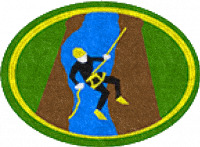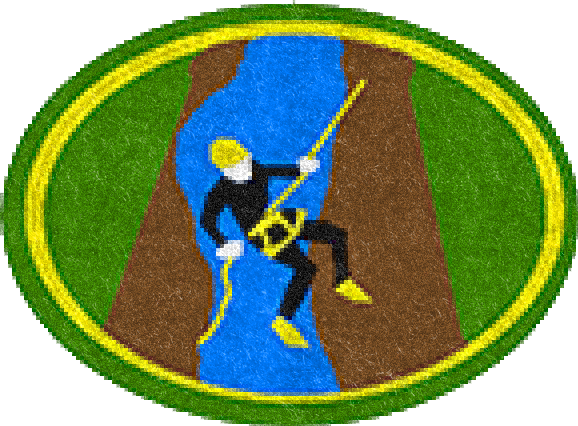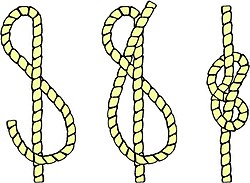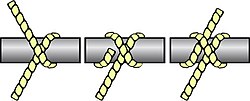Respuestas para la especialidad JA de Barranquismo
From Pathfinder Wiki
This material has been gathered from various sources including those listed above. First aid notes are extracted from ABC to Advanced First Aid 5th Edition. Abseiling calls are those used by Greater Sydney Conference AO Team.
1
¿Qué es el barranquismo?
2
¿Cómo se forman los cañones?
3
Conocer y practicar la buena etiqueta del barranquismo.
4
Descender en rápel en un entorno de cañón mostrando la técnica adecuada y las normas de seguridad.
5
Demostrar cómo cuidar adecuadamente las cuerdas y el equipo después de su uso en un cañón.
6
Demostrar la capacidad de realizar los siguientes nudos:
6a
Nudo de cinta (nudo de agua)
6b
Figura de ocho
| Figura de Ocho |
|---|
|
Uso: Este nudo es ideal para mantener el extremo de una cuerda y que no se quite de una polea.
Cómo amarrar:
|
6c
Figura de ocho en un lazo
6d
Nudo Prusik
6e
Ballestrinque
| Ballestrinque |
|---|
|
Uso: Este nudo es la vuelta o el empalme de «utilidad general» para cuando se necesita un método rápido y sencillo de sujetar una cuerda alrededor de un poste, mástil o estaca (como atar mechas a palos en la especialidad de Arte de hacer velas) u otra cuerda (como en la especialidad de Macramé).
Cómo amarrar:
|
6f
Nudo de cadena
7
Conocer cómo tratar lo siguiente:
7a
Esguince
7b
Hipotermia
7c
Choque
7d
Hueso roto
7e
Conmoción cerebral
8
Conocer cómo manejar los riesgos del barranquismo.
9
Completar con éxito dos cañones diferentes y escribir un informe de sus viajes.





